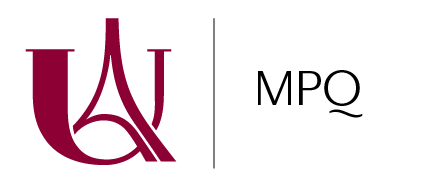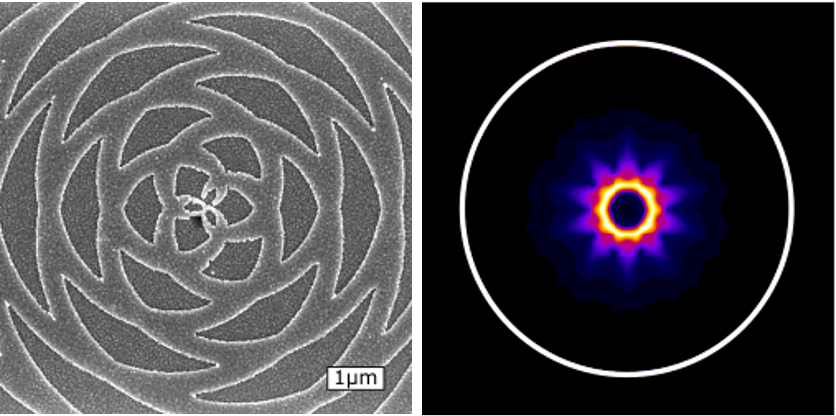
An experimental meta-surface to generate intefering vortices (left) and the resulting light beam when hybridized with luminescent nano-crystals (right) [1].
Laboratoire: MPQ (Matériaux et Phénomènes Quantiques), Université Paris Cité & CNRS
Adress: Bâtiment Condorcet – 10 Rue A. Domon et L. Duquet – 75013 Paris
Internship/PhD supervisor: Aloyse Degiron
Tel: 0157276226
e-mail: aloyse.degiron [at] u-paris.fr
Scientific project:
The past few years have witnessed impressive developments in optical sources capable of emitting light with non-trivial phase and/or polarization patterns, such as optical vortices, vector beams or Airy beams. These structured beams are of interest in many scientific fields ranging from sub-diffraction imaging techniques (Nobel Prize 2014) to optical tweezers (Nobel Prize in 2018). Because structured beams are carved by carefully tailored interferences, their construction requires light possessing a high degree of coherence—typically light produced by a laser.
One research direction pursued by our team is to achieve the same feat with sources of non-lasing light. Non-lasing light (e.g. light from the sun, from LEDs, from burning candles…) lacks of the coherence properties of lasers, meaning that it is not in principle possible to shape all the emitted photons into a single beam—let alone a complex beam such as an optical vortex in which light spirals around a central phase singularity. Our strategy to overcome this fundamental limit is to hybridize a luminescent medium (made of colloidal nanocrystals) with a structured pattern (i.e. a “metasurface”). Rather than emitting random photons in free space, the luminescent medium will emit light with properties dictated by the metasurface. We have already validated these ideas for optical vortices and beams with azimutal polarization [1,2]. The goal of this internship is to generalize these results to vortex knots and vortex links, which are beams with dark phase singularities that form non-trivial topologies such as interlaced or knotted loops [3,4]. The work will include calculations, cleanroom fabrication and optical characterization, with the help of a PhD student of the team.
[1] D. Schanne, S. Suffit, P. Filloux, E. Lhuillier, and A. Degiron, Phys. Rev. Appl. 14, 064077 (2020).
[2] A. Caillas, S. Suffit, P. Filloux, E. Lhuillier, and A. Degiron, Nano Lett. 22, 2155 (2022).
[3] J. Leach, M.R. Dennis, J. Courtial, M.J. Padgett, Nature 432, 165 (2004).
[4] M.R. Dennis, R.P. King, B. Jack, K. O’Holleran, M.J. Padgett, Nature Phys. 6 (2010).
Methods and techniques: Singular light, knot theory, nano-optics
Possibility to go on with a PhD: YES
Envisaged fellowship: EU funding, ANR project (if funded), Doctoral School
À lire aussi
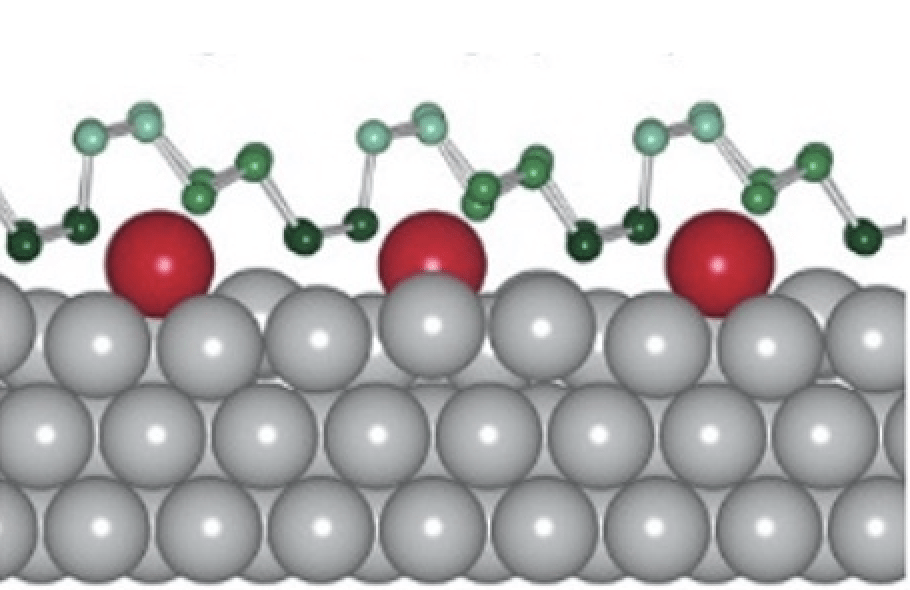
Electronic properties of strained phosphorene allotropes
(a) sketch of a vicinal surface . (b) One of Phophorene allotropes. (c) STM picture of atomic arrangement. Laboratoire: MPQ (Matériaux et Phénomènes Quantiques), Université Paris Cité & CNRSAdress: Bâtiment Condorcet – 10 Rue A. Domon et L. Duquet – 75013...
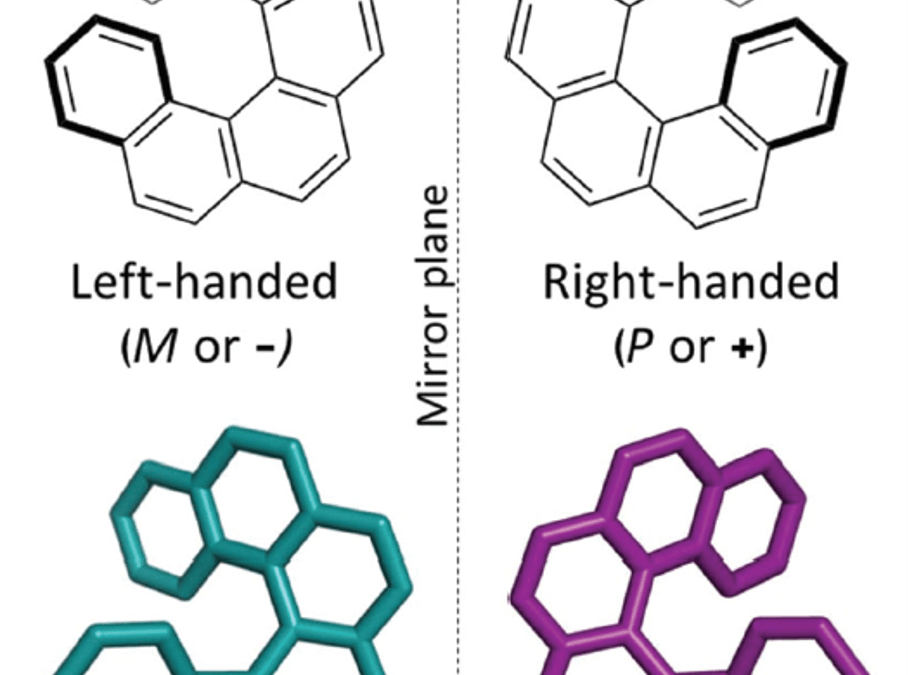
Properties of chiral molecule / metallic interfaces
Laboratoire: MPQ (Matériaux et Phénomènes Quantiques), Université Paris Cité & CNRSAdresse: Bâtiment Condorcet – 10 Rue A. Domon et L. Duquet – 75013 ParisDirecteur de stage/thèse: Amandine BellecTel: 0157276290e-mail: amandine.bellec@u-paris.fr Scientific...
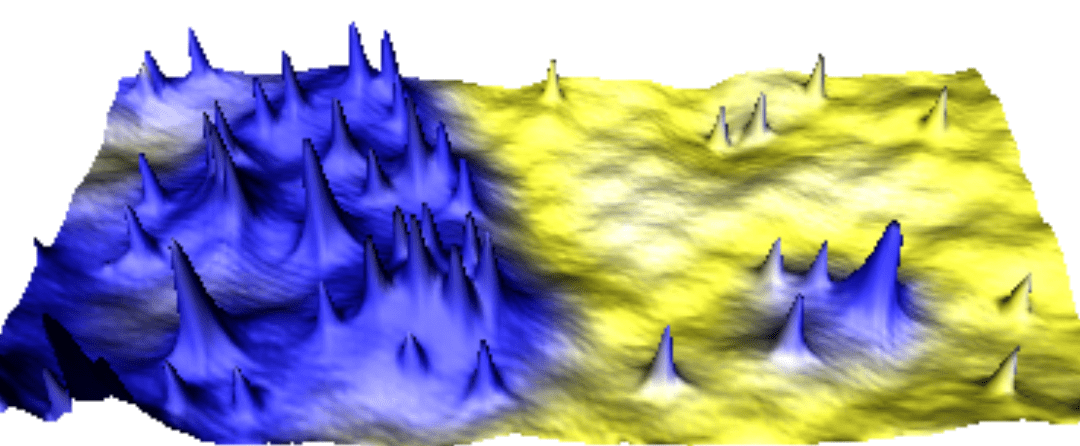
Controlling the properties of 2D materials at the atomic scale by defect engineering
Laboratoire: MPQ (Matériaux et Phénomènes Quantiques), Université Paris Cité / CNRSAdress: Bâtiment Condorcet – 10 Rue A. Domon et L. Duquet – 75013 ParisInternship/PhD supervisor: Jérôme LagouteTel: 0157276299e-mail: jerome.lagoute@u-paris.fr STM image (20 nm x 40...
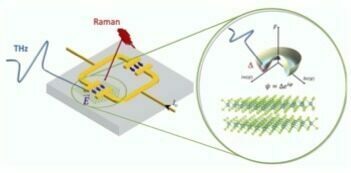
Cavity Higgs polariton
2D TMD embedded in a THz split ring cavity (left) The resulting coupled light-SC matter state is probed by Raman and THz spectroscopy. The SC Higgs mode is a collective oscillation of the SC condensate (right) that can couple to cavity photon to form cavity-Higgs...
